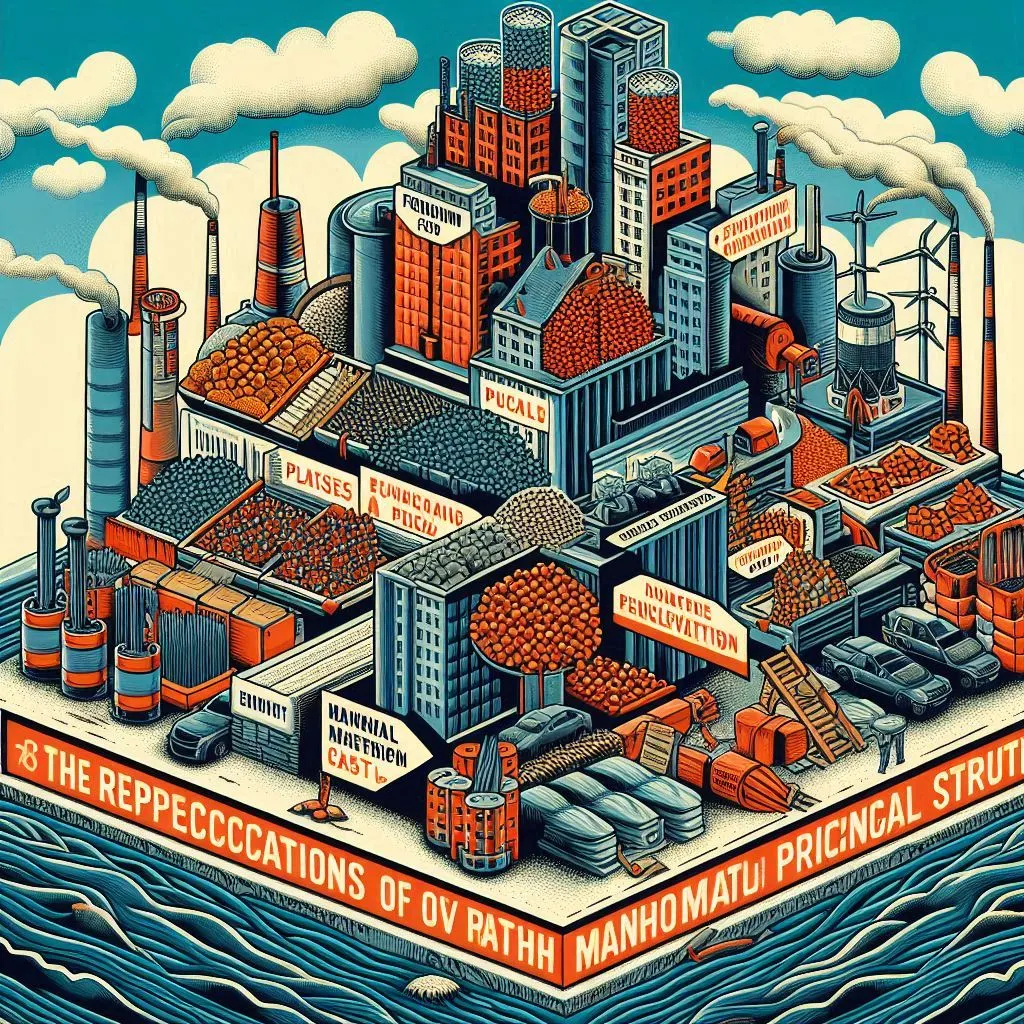Monopolies hold a unique position in the market due to their control over supply and pricing, often resulting in significant economic implications. One critical factor influencing monopoly pricing is the cost of raw materials. Variations in raw material costs can have profound effects on how monopolistic firms adjust their pricing strategies and output levels. This blog explores these repercussions in detail, utilizing various questions related to monopoly behavior to provide a comprehensive analysis.
The fluctuations in raw material costs can significantly impact monopoly pricing structures, leading to complex market dynamics. Monopolistic firms, which control a significant portion of the market, often face heightened production costs when raw material prices rise. This increase typically compels monopolists to adjust their pricing strategies to maintain profit margins, potentially leading to higher consumer prices and reduced output. Such adjustments can exacerbate market inefficiencies and contribute to consumer dissatisfaction.
For those working on an assignment on market structures, understanding how raw material cost variations influence monopoly pricing is crucial. These insights help in analyzing how monopolistic firms navigate cost pressures and their broader implications on market equilibrium and consumer welfare. By examining the relationship between raw material costs and monopoly pricing, one can gain a deeper understanding of the operational challenges and economic effects associated with monopolistic market behaviors.

Monopoly Pricing Dynamics Basics
In a monopoly, the firm is the sole provider of a product or service, which means it has considerable control over its pricing structure. Unlike firms in perfectly competitive markets, a monopolist faces a downward-sloping demand curve, meaning it can influence prices by adjusting the quantity supplied. Raw material costs are a significant component of a monopoly's cost structure, and fluctuations in these costs can directly impact pricing decisions.
Raw Material Costs and Pricing Adjustments
When raw material costs rise, monopolistic firms face increased production expenses. This scenario typically leads to higher prices for consumers. The extent of this price increase depends on the elasticity of demand for the product. If demand is inelastic, a monopolist can pass on the majority of the cost increase to consumers without significantly reducing the quantity demanded. Conversely, if demand is more elastic, the firm might absorb some of the cost increase to avoid losing customers.
Economic Repercussions and Pricing Strategies
- Impact on Monopoly Pricing and Output: A rise in raw material costs can compel a monopoly to adjust its pricing strategy. The firm might increase prices to maintain profit margins, but this could also lead to a reduction in output if the higher prices result in decreased demand. This adjustment is crucial for maintaining profitability while balancing consumer demand.
- The Role of Barriers to Entry: High raw material costs can act as a barrier to entry for potential competitors. If the monopoly's cost structure is such that only it can afford to operate profitably, new entrants might be discouraged, reinforcing the monopoly's market power.
- Economic Inefficiencies and Consumer Impact: Monopolies are often criticized for being economically inefficient. When raw material costs increase, monopolistic firms may not only raise prices but also reduce output, leading to a deadweight loss in the market. Consumers face higher prices and fewer choices, which can reduce overall economic welfare.
- Government Fees and Market Behavior: If a government imposes an annual license fee on a monopolist equivalent to its economic profits, this additional cost might further exacerbate pricing issues. The firm may raise prices to cover both the increased raw material costs and the government fee, potentially leading to even higher consumer prices and reduced output.
- Monopoly Pricing Mechanisms: In response to raw material cost variations, monopolies may adjust their pricing mechanisms to optimize profit margins. This adjustment involves analyzing the demand curve to determine the optimal price point that maximizes revenue while accounting for increased production costs.
Real-World Examples and Case Studies
- Natural Monopolies and Raw Material Costs: Natural monopolies, such as utilities, are often subject to fluctuations in raw material costs. For instance, a utility company that relies on coal for energy production might face significant cost variations due to changes in coal prices. These fluctuations can lead to adjustments in utility rates, impacting consumers and potentially leading to regulatory scrutiny.
- Tech Industry Monopolies: Companies like Microsoft, which have substantial market power, also face raw material cost fluctuations, particularly in terms of hardware and manufacturing inputs. While their primary costs are not raw materials in the traditional sense, supply chain disruptions and component costs can influence pricing decisions and overall profitability.
Conclusion
The repercussions of raw material cost variations on monopoly pricing structures are multifaceted. Monopolistic firms must navigate the complexities of cost increases by adjusting their pricing strategies, which can have significant implications for consumers and market efficiency. Understanding these dynamics is crucial for evaluating the broader economic impacts of monopolies and developing effective regulatory policies to ensure fair market practices. By examining how raw material costs influence monopoly pricing, we gain insights into the broader economic implications of monopolistic behavior and the challenges faced by both firms and consumers in such market structures. These concepts help students to complete their economics assignmentprecisely by providing a clear understanding of how cost fluctuations impact monopoly pricing and market outcomes.